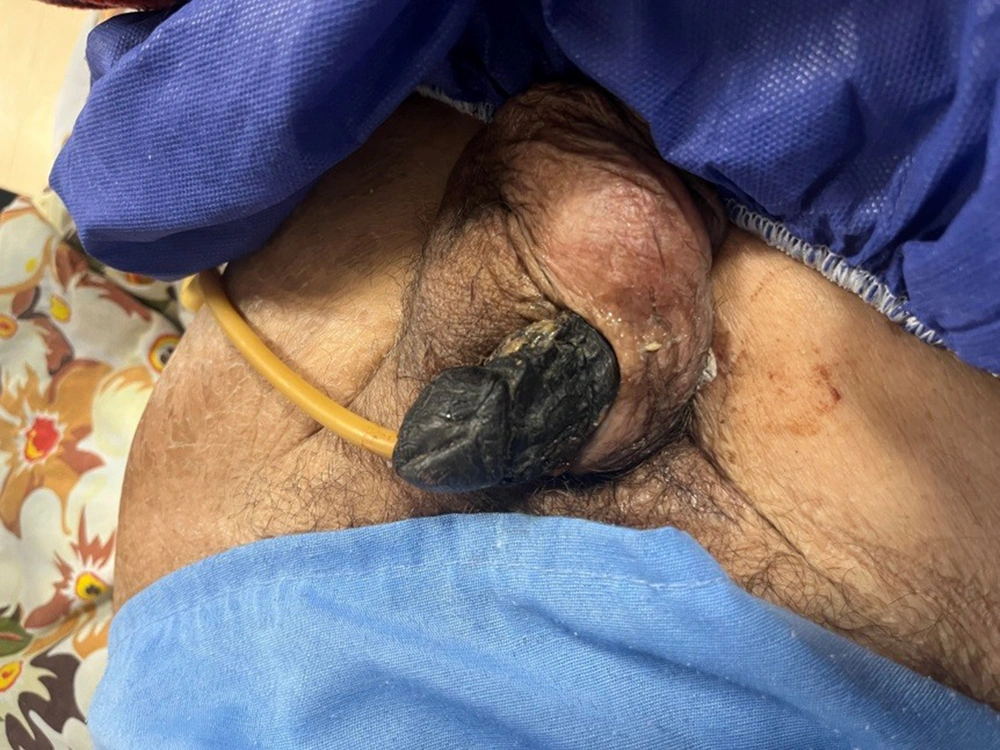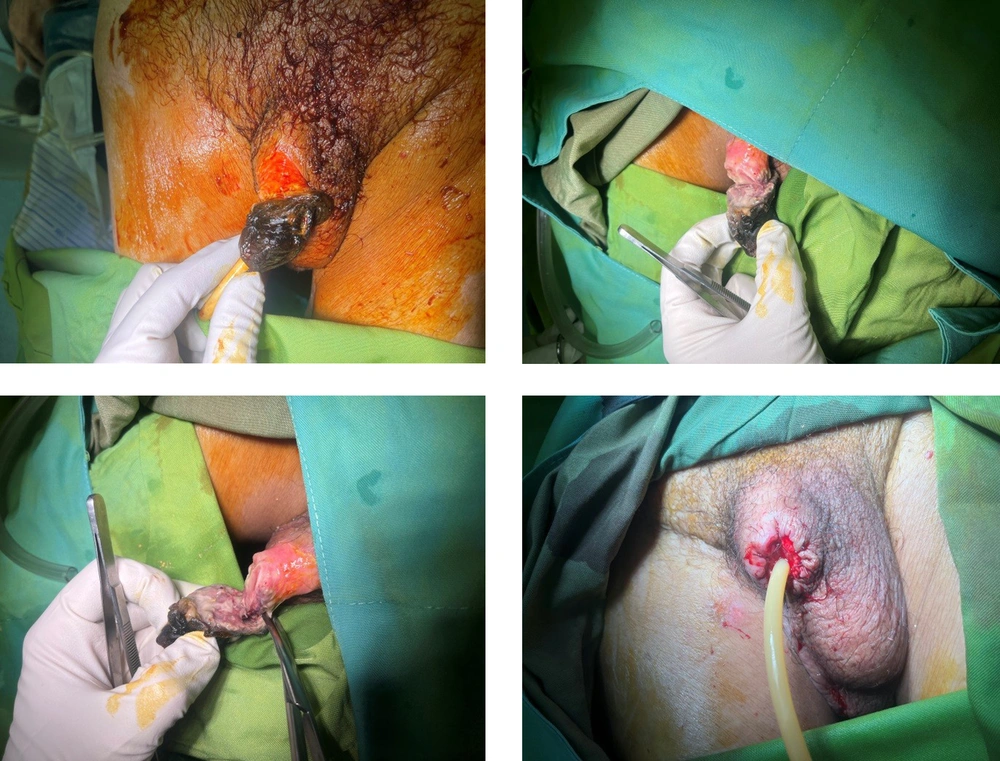1. Introduction
Strangulation means the neck compression of any organ or tissue that impedes blood perfusion. Penile necrosis can be associated with health problems like circulatory disorders and disseminated infections. Penis ischemia is uncommon due to its excellent collateral vessels (1). Surgical procedures, like penectomy, may be the only therapeutic strategy. Penile necrosis may be seen in end-stage renal disease in 1% - 4 % of patients accompanied by calciphylaxis, which succumb to death in 70% with a very short life expectancy (2). However, we report a case of complete penile necrosis in a neglected man because of strangulation of an uncared-for condom sheath without kidney disease or calciphylaxis.
2. Case Presentation
The patient was a man aged 89 with dementia without any vascular disease wearing a condom sheath because of urinary incontinence for many months. Lack of precise genitalia care resulted in strangulation of the penis and complete necrosis (Figure 1). He had urinary incontinence for at least 3 years using a condom sheath. The patient was referred to the clinic with a fever and urinary retention. His penile necrotic tissue was dry and involved completely without discharge or numbness. Following resuscitation, we performed a complete penectomy and urethrostomy (Figure 2). His son completed the informed consent to excision of a non-viable penis. All of the necrotic tissue is excised until healthy, viable tissue. Then urethral mucosa was sutured to the penile base skin with a separate 4 - 0 Vicryl suture. He was discharged 3 days later in good condition with Cephalexin 500 mg every 6-hours and local Zinc Oxide ointment every 12-hour prescription. The patient has acceptable voiding from the penis remnant after 6 months.
3. Discussion
Penile necrosis ischemia is due to severe Diabetes Mellitus, thrombotic phenomena, penile prosthesis, and calcium deposits in dialysis patients. Penile mortification is uncommon due to its abundant blood circulation (1). Penile gangrene can be provoked by vascular compromise resulting in severe complications. Penile gangrene is commonly caused by DM or end-stage renal disease, but recently, its incidence due to penile strangulation has increased because of constricting tools for sexual stimulation (3). About our patient, strangulation was because of neglected and forgotten condom sheath strangling. A patient with dry gangrene is more likely to have a problem earlier; however, they may feel ashamed of their situation or have psychological problems.
A thin layer of fibrous tissue covers the corpus spongiosum and urethra, making them vulnerable to mechanical injury. Nonetheless, gangrene is not common, possibly because each corpus cavernosum has its artery, and Buck’s fascia and corporeal tissue thickness can resist pressure on the deep vessels (4).
Penile gangrene can be cured surgically or conservatively. The surgery prognosis is more favorable and has been reported (5). Clinical differentiation between dry gangrene because of wet gangrene and ischemic disease with infection is important in choosing an appropriate treatment. Wet gangrene is originally infectious, and prompt surgery can reduce associated mortality and morbidity. Sepsis, progressive tissue destruction, and death can be expected if left untreated. Total or partial penectomy is the treatment of choice (6).
This patient has no specific diseases like Diabetes Mellitus, chronic kidney disease, or calciphylaxis, which are more prevalent in rare penile ischemia cases.
3.1. Conclusions
Penile condom sheaths in neglected old patients must be used cautiously because of possible catastrophic results. So diaper appliances may be safer, especially for incontinent males.

